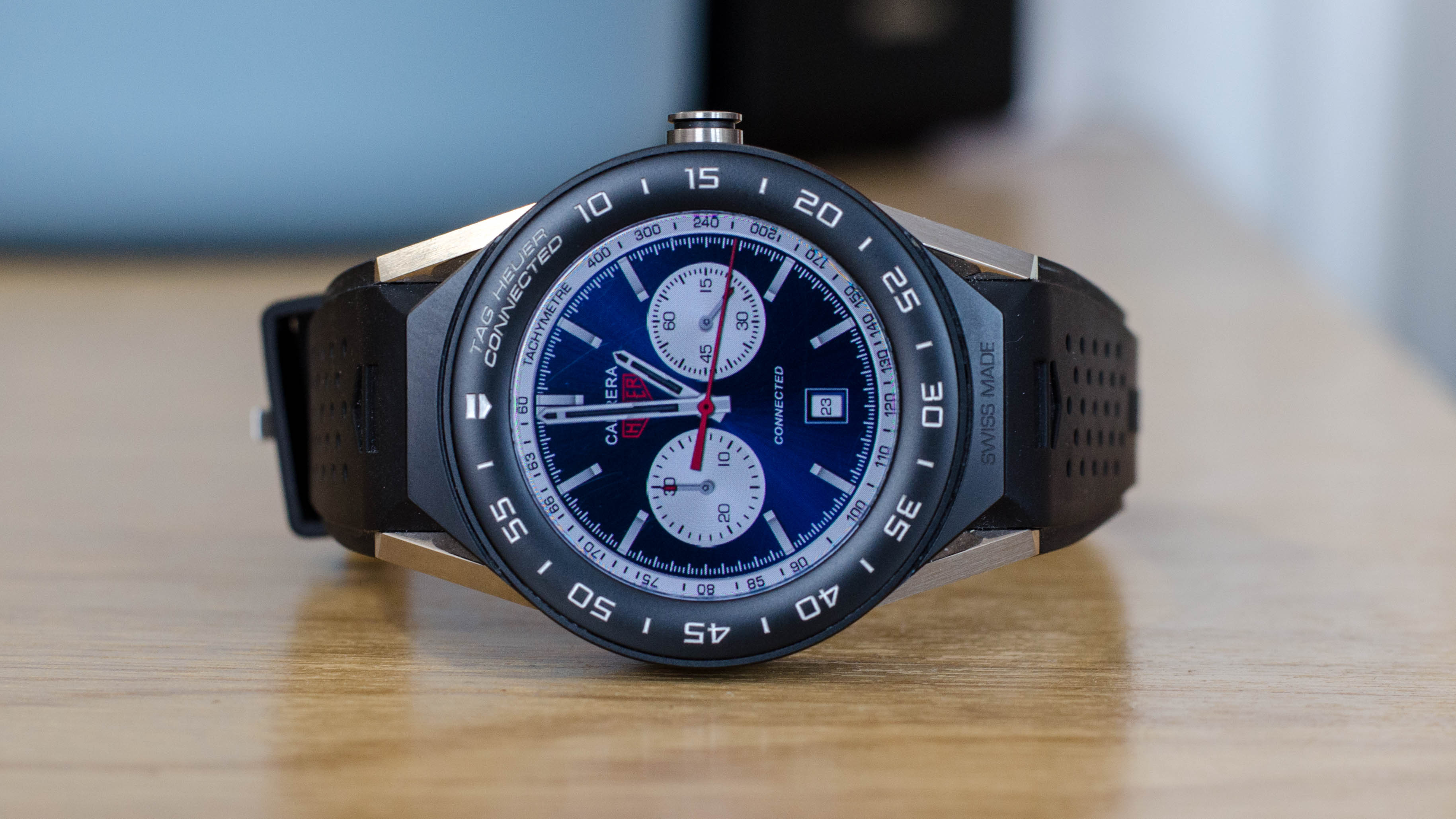Why you can trust TechRadar
Compatibility and apps
- Works with smartphones running Android 4.4 or iOS 9 onwards
- Decent range of apps available from the Play Store
Despite the recent rebrand to Wear OS, the Tag 41’s operating system is basically the same as Android Wear 2.0 on the Tag Heuer Connected Modular 45. This means an operating system designed for the small, circular touchscreen of a smartwatch, where a watch face is the home screen, and applications are small and simple.
Wear OS comes pre-installed on many Android smartphones, but if you’re using an iPhone you’ll need to download it from the App Store before you can setup the Tag Heuer. The Wear OS app is where you can tinker with the settings of the watch and pick a different face.
A second smartphone app called Tag Heuer Studio lets you create your own watch face design by picking from a range of dials, colors, layouts and highlights; there are thousands of combinations here, so you’re bound to find one that’s perfect for you.

The Tag connects to your smartphone over Bluetooth and displays incoming notifications like calls, texts or WhatsApp messages. You can reply to these by tapping on a suggested reply, dictating a reply into the watch’s microphone, or even tapping out a message on the screen.
This may sound ridiculous, but the Wear OS keyboard is surprisingly accurate and perfectly adequate for typing out a quick message when reaching for your phone is impractical.

Calls cannot be made or received on the Tag, as there is no speaker; instead, you will be notified on the watch, but tapping the green accept icon opens the call on your phone. You can, however, reject incoming calls with a tap of the watch.
Notifications all cause the Modular 41 to vibrate, which caught our attention most of the time - more so than a phone in our pocket would while walking, for example - but the vibration of Wear OS watches isn’t as powerful as the haptic tapping of the Apple Watch 3.
Sign up for breaking news, reviews, opinion, top tech deals, and more.
Battery life
- Has no trouble lasting a full day, but it won’t get through two
- Charging dock connects well, but doesn’t act as a stand
Using the Tag Heuer Connected Modular 41 reminded us of the early days of the smartwatch, when nightly charging was a necessity. Sure, it will get through an average day without cause for concern, but usually with around 20-30% charge remaining when we went to bed. Forget to charge at night, and it will surely die midway through the next day.
A more intensive day - one involving exercise and the installation of an app or two from the Play Store, for example - will see the battery dip below 20% by mid-evening, then enter battery-saver mode at 15%, shutting down the always-on display and reducing functionality.
As such, there is no sleep-tracking capability - not that we’d want to wear a chunky watch like the Tag in bed anyway.

Charging is done via a magnetic dock which snaps reassuringly into place on the back of the Tag’s case, and is powered by an included micro USB cable and detachable wall plug.
When fitted with a metal bracelet strap, the Tag sits flat on its charger, but with the rubber strap of our review unit the watch has to sit on its side, as shown in the photos.
While this is mostly fine, we thought the manufacturer of a $1,200 / £1,000 smartwatch would try and make charging a little more presentable. A dock which neatly holds the watch so that it can be used as a bedside clock would have been better, like the charger of the Samsung Gear Sport.
Current page: Compatibility, apps and battery life
Prev Page Specs, performance and fitness Next Page Verdict
Alistair Charlton is based in London and has worked as a freelance technology and automotive journalist for over a decade. A lifelong tech enthusiast, Alistair has written extensively about dash cams and robotic vacuum cleaners for TechRadar, among other products. As well as TechRadar, he also writes for Wired, T3, Forbes, The Independent, Digital Camera World and Grand Designs Magazine, among others.
